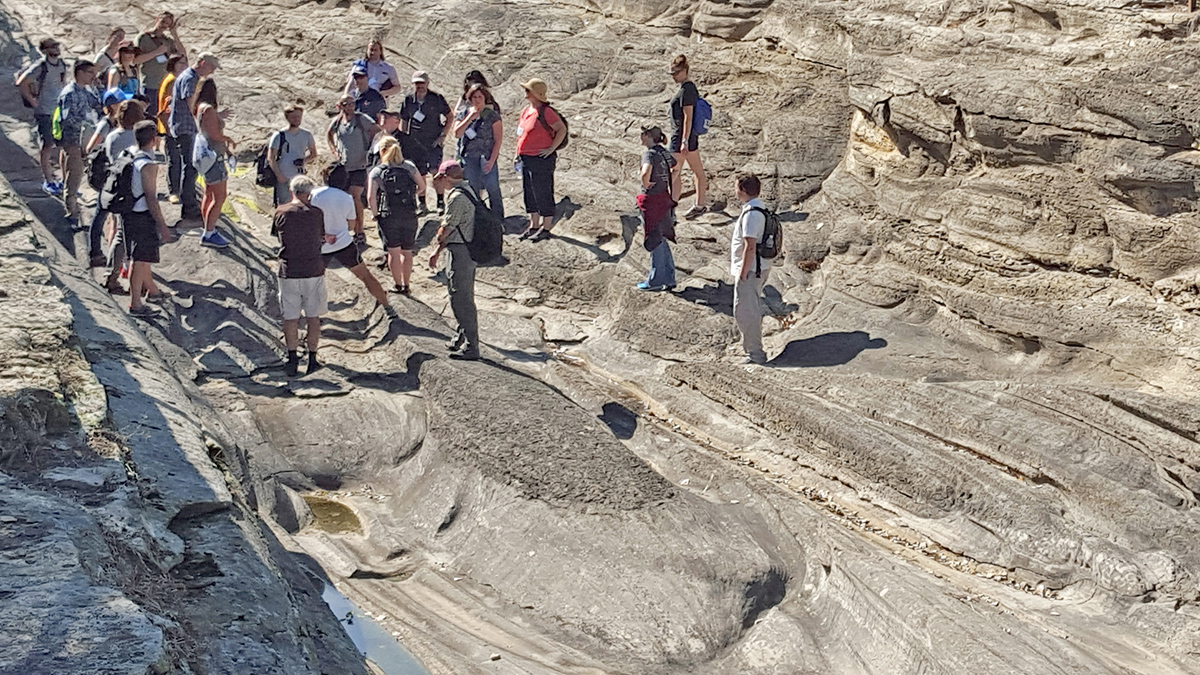Understanding and predicting how global sea levels respond to climate-driven ice sheet changes have emerged as pressing concerns because of the expected consequences of these changes for humans around the world [e.g., Intergovernmental Panel on Climate Change, 2023]. Calls to prioritize this science from island nation governments, for example, have focused international attention on the connections between shrinking polar ice sheets and existential threats to small island nations and low-lying coastal regions [Vousdoukas et al., 2023].
Modeling glacial isostatic adjustment (GIA) poses challenges to early-career scientists because of the ranges of specialized skills it requires and disciplines it involves.
When immense bodies of ice melt and release liquid water, they directly affect sea level by adding volume to the ocean. In addition, the reduced load on the solid Earth below the ice causes regions that bore weight to rise while regions around the outer edge of a melting ice sheet sink. This solid Earth response to ice mass change, called glacial isostatic adjustment (GIA), profoundly influences the effects of ice melting on sea level. Reduced ice sheet mass also weakens the gravitational attraction of the ice, thus displacing ocean water away from diminished ice sheet margins.
The effects of GIA have long been recognized, and they continue to be studied today. Modeling GIA, for example, is vital for informing global projections of future ice mass and sea level. Yet this type of advanced research poses challenges to early-career scientists because of the ranges of specialized skills it requires and disciplines it involves. The barriers to entry in this field of study inhibit efforts to advance urgent research.
For the past decade, several organizations have collaborated to overcome these obstacles by creating a series of training schools for early-career scientists. The schools provide a focused, organized means for these scientists to develop the skills needed to build and improve GIA models. Their success suggests they could be a valuable model for similar training programs covering other scientific disciplines or challenges.
Melting the Barriers to Entry
Because of its complexity, modeling GIA demands an interdisciplinary approach that draws from fields such as geophysics, geodynamics, geodesy, glaciology, seismology, and geology. Synthesizing knowledge from different disciplines can present financial, methodological, and communications challenges [Schmidt and Moyer, 2008; Schmidt et al., 2012; Bromham et al., 2016].
Further, GIA-based research requires understanding of a wide range of processes, theories, and observational techniques, as well as advanced technical skills like computer coding and numerical analysis. A survey of nearly 200 recent Ph.D. graduates in polar and climate science showed that researchers primarily obtain these essential skills through informal training—often teaching themselves—with most early-career researchers looking beyond traditional graduate school coursework to obtain the knowledge required [LeDee et al., 2011].
The collaboration necessary to tackle science that is global in scope is particularly difficult for early-career scientists who have yet to develop broad collegial networks. Without pathways to acquire relevant experience, specialized skills, and interdisciplinary partnerships, many promising early-career researchers may have difficulty entering the field of GIA.
For decades, the science community has considered how best to advance collaborative, international, and interdisciplinary science [e.g., National Academy of Sciences et al., 2005; Schmidt and Moyer, 2008; LeDee et al., 2011]. However, given the urgency of societal issues arising from global change—from human migration to the economy [e.g., Carleton and Hsiang, 2016]—and the limited opportunities to obtain the requisite experience, progress in this arena must accelerate.
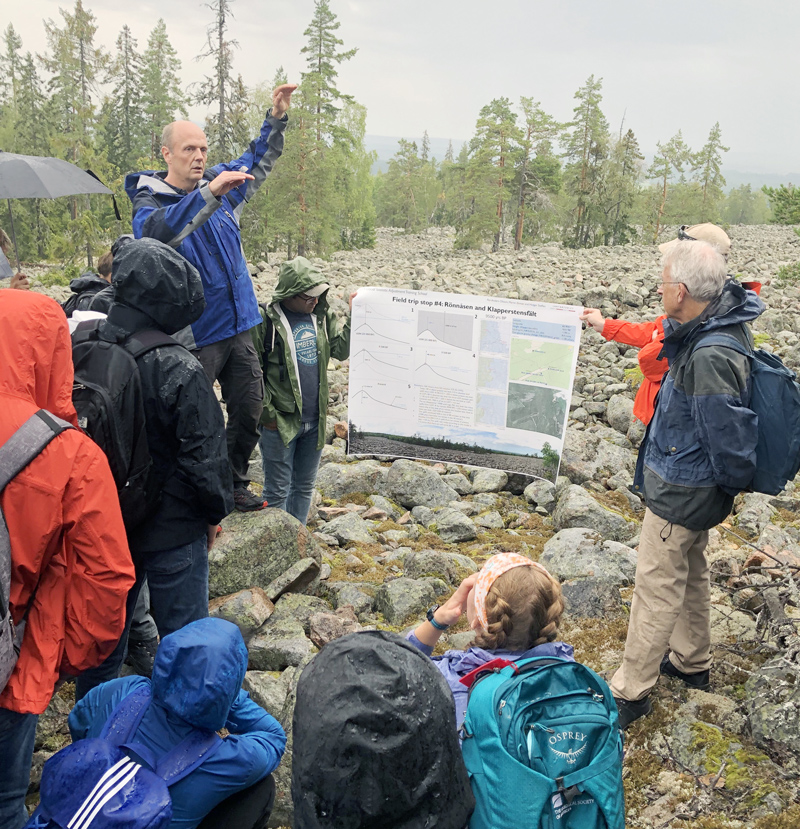
To address this challenge, the National Science Foundation (NSF)-funded Antarctic Network component of the Polar Earth Observing Network (ANET-POLENET) project partnered with the international Scientific Committee on Antarctic Research (SCAR) and other U.S. and international organizations to design, fund, and implement training schools aimed at enabling a new generation of scientists to model GIA.
Each 5-day program, designed as an experiential learning opportunity, includes interactive lectures, hands-on exercises, student-lecturer work sessions, a field trip to view real-world examples of learned materials, reflection activities, and structured opportunities to facilitate networking and collaboration. The schools are geared for graduate students and early-career scientists interested in GIA modeling or directly related topics, although they also welcome other interested applicants at any experience level.
ANET-POLENET organizers from Ohio State University hosted the first school in 2015 on Gibraltar Island, Ohio, in Lake Erie, modeling it after GIA schools sponsored by the European Cooperation in Science and Technology program in 2009 and 2011. Local organizers from the Swedish Mapping, Cadastral and Land Registration Authority (Lantmäteriet) hosted two subsequent schools in Gävle, Sweden, in 2019 and 2023.
Empowerment Through Experiential Learning
The GIA training schools provide instruction, tools, and opportunities beyond those offered through typical university coursework.
The GIA training schools provide instruction, tools, and opportunities beyond those offered through typical university coursework. The goals are for participants to walk away with holistic views across observational and modeling aspects of GIA, new networks of collaborators and mentors, and a sense of empowerment to conduct independent research.
A global cohort of highly experienced researchers has served as instructors, bringing to each school an extraordinary level of advanced interdisciplinary knowledge that they’ve shared through various instructional approaches. Lectures have covered topics such as GIA theory, 3D Earth structure, and available observational records of changing ice sheets and sea level (and constraints on those records), as well as how observations are integrated into coupled models of the ice sheet–solid Earth–ocean system used to simulate future change. Training has also covered the underlying model physics and modeling skills that underpin the computer simulations.
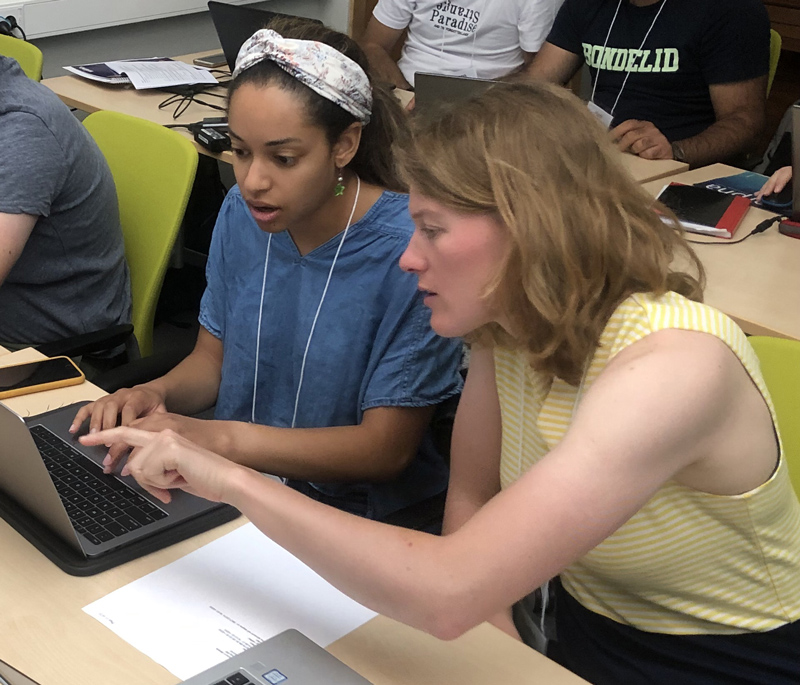
Given the objectives of ANET-POLENET and SCAR, sessions specifically focusing on Antarctica have been offered. Participants have learned to pose and answer critical questions about ice mass change and ice sheet stability in Antarctica—including about its potential contributions to global sea level change—that have societally important implications, especially for coastal communities around the world.
Students implement new knowledge and skills learned in the lectures during hands-on exercises. These exercises expose them to numerical codes used for GIA and ice sheet modeling and for calculating volumetric maps of the mantle that show how a GIA observation senses mantle viscosity in 3D.
Access to such modeling code is a key stepping stone enabling GIA research and is often one of the missing components that ends up excluding promising early-career researchers from the field. By the end of the week in each iteration of the school, all participants have GIA modeling code installed and functioning on personal laptops. Furthermore, most successfully complete the practical exercises, and many progress to incorporating data from their own research.
Each school includes a field trip so participants can examine real-world examples and physical evidence of GIA processes firsthand.
Each school also includes a field trip so participants can examine real-world examples and physical evidence of GIA processes firsthand. In 2015, students visited Kelley’s Island in Lake Erie, Ohio, and saw spectacular examples of glacial grooves gouged long ago into bedrock by debris at the bottom of a moving glacier. In 2019 and 2023, students saw raised beaches where land uplift due to GIA exceeded sea level rise in the Gulf of Bothnia. Exposure to geological and glaciological records of changing ice and sea level provides participants with a more holistic view of materials learned in the lectures and exercises, encouraging critical thinking and underscoring the synergy between observational data inputs and model development.
Cultivating Collaboration and Mentorship
Additional central goals of the training schools are to cultivate collaboration across disciplines and to foster international partnerships, both widely acknowledged as requirements for the scientific community to tackle complex global problems. Polar research especially has emphasized these needs because extreme conditions and limited logistical resources increase the need for cooperation among nations to address urgent issues arising from global warming, such as ice sheet and sea level change [e.g., Kennicutt et al., 2014; National Academies of Sciences, Engineering, and Medicine, 2024].
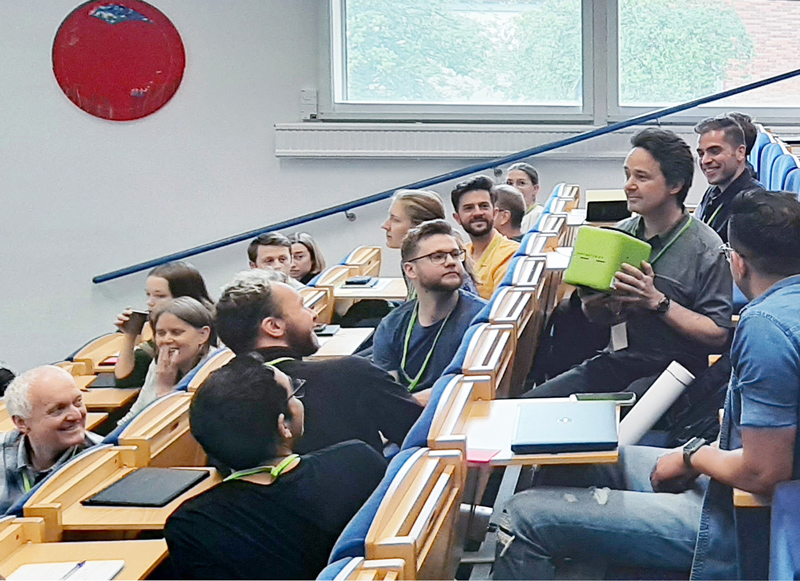
Participants have opportunities to repeatedly spend one-on-one time with different instructors.
Structured opportunities to network with peers and instructors ensure that participants develop new networks of potential collaborators and mentors. For example, at the start of each school, each participant introduces another participant to the group, leading to early communications among peers and insights into individual interests.
In another interactive activity, students write questions they hope to have answered during the school and then work together to group the questions by topics. This exercise enables instructors to cater the curriculum dynamically to student needs while also stimulating academic inquiry, discussions, reflection, critical analysis, and synthesis throughout the week.
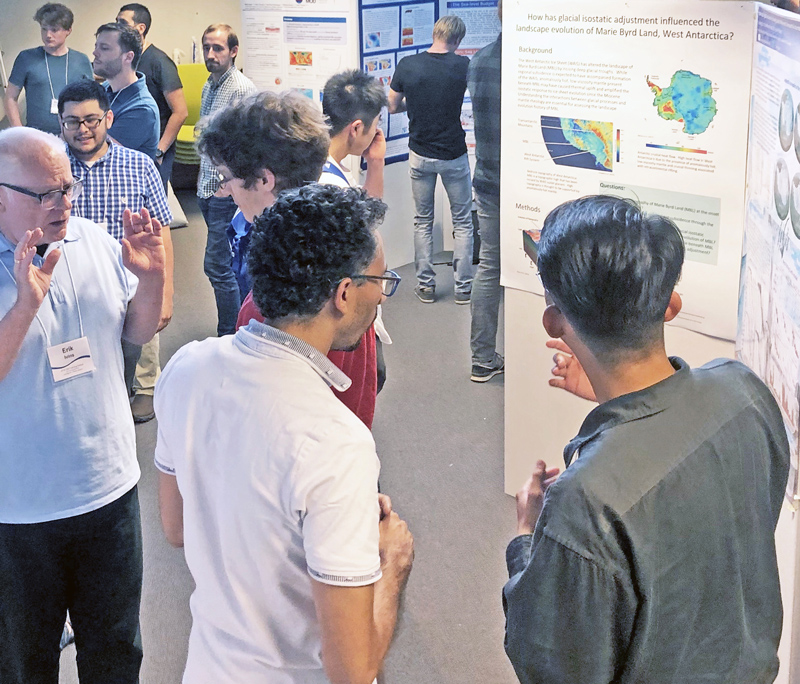
Each participant also brings a poster of their choice to introduce their individual research, interests, and goals to instructors and the other students. With these posters, which remain accessible throughout the week to encourage discussion, students showcase preliminary research results, present materials used at previous meetings, and highlight specific elements of their work to facilitate targeted conversations with instructors.
With an average of one teacher per three students, participants have opportunities to repeatedly spend one-on-one time with different instructors. Responses to postschool surveys show that participants find these opportunities highly beneficial. One student responded, “My favorite part of the course was being able to interact with each of the instructors outside of their lectures. I think some of the best discussions occurred while at lunch or dinner or even during the coffee breaks.”
Strengthening the Research Community
A foundational principle of each training school so far has been to offer the program at no cost to participants. This goal was achieved with generous logistical and monetary backing from numerous organizations around the world (see the full list in the acknowledgments), which made it possible to waive all registration fees and to provide additional support (e.g., for travel expenses) for participants who submitted financial assistance requests. Removing this monetary obstacle enabled students to participate regardless of their personal or institutional resources. (Although no future schools are currently scheduled, organizers plan to pursue renewed support for future schools through similar partnerships among NSF-funded projects, SCAR, and other organizations.)
Priority has been placed on including students from nations engaged in the early stages of building national Antarctic research programs, such as Colombia and Malaysia, in alignment with SCAR’s goals to train, support, and broaden the Antarctic research community and to increase scientific capacity in these countries. Through the years, participants have come from dozens of countries spanning all six populated continents (Figure 1), strengthening the school experience for everyone. The unique mixes of backgrounds, cultures, and knowledge levels represented translate to broad ranges of perspectives and create supportive environments.
Free-text responses to survey questions about the school experience indicate that students value the mixture of nationalities. For example, one participant responded, “The course was great. International participants enriched the experience with local point of view and different scientific backgrounds.”
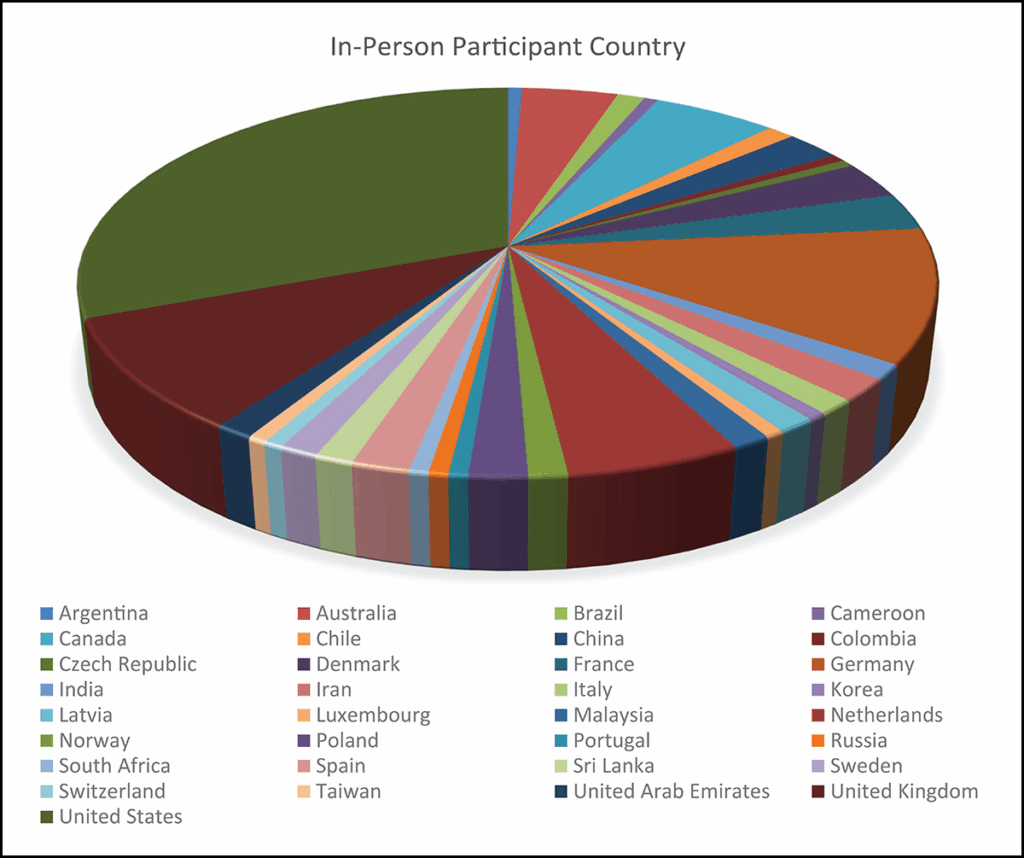
A virtual participation option has expanded the reach of the schools and allowed remote attendees to benefit from most of the training school content and to participate live in question-and-answer sessions. In total across all three GIA training schools, 124 students attended in person, and hundreds joined virtually through lectures broadcast online in real time.
An Impressive Record of Success
The popularity of the GIA training schools offers a clear indication of their appeal. Each consecutive iteration was increasingly oversubscribed—the 2023 school could accept only about one of every five applicants—and saw increasing virtual attendance. Responses to surveys indicated that 98% of participants felt the school increased their scientific skills and abilities. Further, 98% felt the school increased their interest in GIA, and 42% reported that they formed new collaborations as a result, with 82% of those collaborations involving individuals from multiple nations (Figure 2).
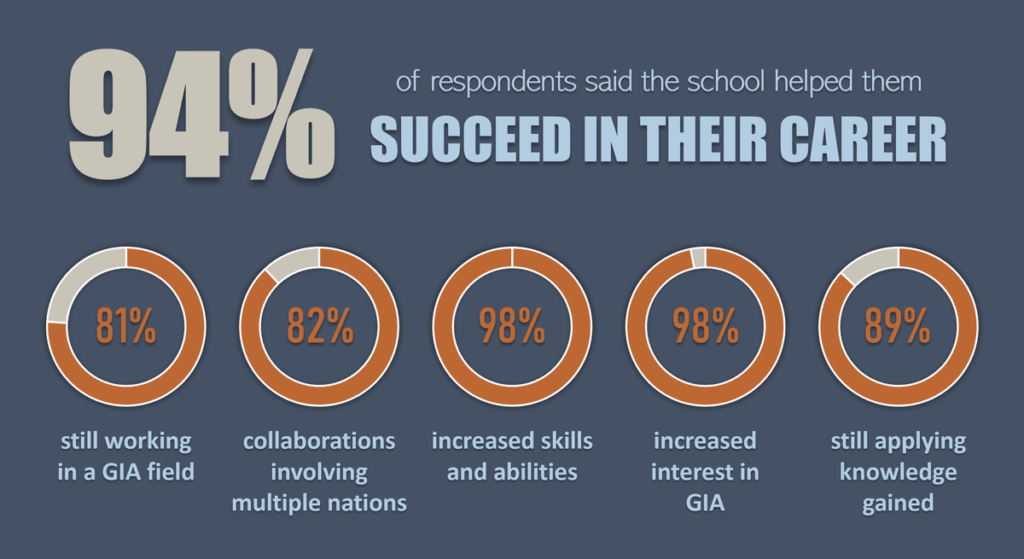
The high retention rate suggests that the schools achieved their primary objective of empowering students to conduct independent research related to GIA.
Participants surveyed months to years after completing the training have given similarly positive responses. Ninety-four percent said the school helped them succeed in their career, and 81% reported still working in the field of GIA. Such a high retention rate suggests that the schools achieved their primary objective of empowering students to conduct independent research related to GIA.
Lectures recorded and posted online after each school was complete remain available through the POLENET training schools website and have provided ongoing resources not only for participants but also for the public. Recorded lectures have accumulated thousands of views, and traffic rates indicate sustained usage. For example, views of lectures from the 2019 training school during the 12 months immediately following that school nearly matched the number of live-feed views. Within 3 years, views more than tripled, and now roughly 6 years later, views (of both 2019 and 2023 lectures) have grown to more than 12 times the number of live-feed views in 2019.
An increase in the number of scientists with capabilities in complex Earth system modeling is a direct outcome of the GIA training schools. Perhaps the most important indicators of the schools’ success are the achievements of former participants—four of whom, for example, went on to become instructors at subsequent GIA schools—and their advancement in careers in GIA or related areas of study. A growing share of participants have become conveners and presenters in relevant international meeting sessions, authors of groundbreaking papers, and contributors to leading research groups around the world.
A Model Approach Across Science
By empowering researchers with advanced interdisciplinary knowledge, modeling skills, and connections that facilitate future collaboration, the GIA training schools have served as effective pathways for early-career scientists to enter the field of GIA modeling. With more skilled scientists focused on urgent research related to changing ice sheets and sea levels, the program will continue to benefit the scientific community and the public far beyond the life of the schools.
Moreover, positive outcomes from the schools indicate that this type of experiential learning approach could be a successful model for training researchers to work in other highly complex fields, such as climate modeling and coupled climate-ocean-ice modeling of ice sheets, that require cross-disciplinary exchanges of ideas and knowledge. Numerous studies document the strong need for this type of resource [e.g., Schmidt and Moyer, 2008; Ledford, 2015].
The experiences of the GIA schools suggest several primary transferable lessons that can inform efforts to develop similar programs for emerging researchers.
The experiences of the GIA schools suggest several primary transferable lessons that can inform efforts to develop similar programs for emerging researchers. First, low student-teacher ratios coupled with an experiential learning approach are integral to success. This strategy ensures participants have ample time with instructors to learn the materials being taught and to discuss their own research with experienced potential collaborators and mentors.
Second, minimizing the cost of participation by seeking funding, no matter the scale, from a range of organizations ensures that students have access to the schools regardless of their financial status. Financial backing for the GIA training schools has included both large and small grants, with some supporting only a single student. In total, this funding has facilitated the international involvement that attendees have found beneficial to their career development and research.
Third, identifying and removing barriers unique to the field of interest are another key to success. For the case of GIA modeling, the limited availability of numerical code used in research is one such challenge; an inside connection is often needed to gain access to code and guidance on using it. By consciously removing obstacles—for example, by working with open-source resources and involving instructors knowledgeable in these resources—training programs can again strengthen students’ learning and future growth.
Adapting the model of the GIA training schools to other fields with these lessons and approaches in mind will help more early-career researchers develop their capabilities and careers. It will also help the scientific community succeed in tackling important challenges facing society today from melting ice, rising seas, and more.
Acknowledgments
In addition to ANET-POLENET, the NSF-funded “Collaborative Research: Imaging the 3D Viscosity Structure of the Antarctic Mantle with Existing Observations from GPS and Relative Sea Level” project and the SCAR Solid Earth Response and Influence on Cryospheric Evolution (SERCE) and Instabilities & Thresholds in Antarctica (INSTANT) programs played integral organizational and financial roles in supporting past GIA training schools. Additional financial support was provided by the European Geosciences Union, Technical University of Denmark, the International Union of Geodesy and Geophysics, Polar Knowledge Canada, International Glaciological Society, International Association of Cryospheric Sciences, University of Gävle, and Lantmäteriet. We gratefully acknowledge Pippa Whitehouse, Giorgio Spada, and Volker Klemann for their contributions coordinating the GIA training schools, as well as all individuals who volunteered as instructors. Their time and efforts were essential to the success of the program. For the complete list of organizers and participating instructors, please visit the GIA training school web pages from 2015, 2019, and 2023.
References
Bromham, L., R. Dinnage, and X. Hua (2016), Interdisciplinary research has consistently lower funding success, Nature, 534(7609), 684–687, https://doi.org/10.1038/nature18315.
Carleton, T. A., and S. M. Hsiang (2016), Social and economic impacts of climate, Science, 353(6304), aad9837, https://doi.org/10.1126/science.aad9837.
Intergovernmental Panel on Climate Change (2023), Climate Change 2023: Synthesis Report. Contribution of Working Groups I, II and III to the Sixth Assessment Report of the Intergovernmental Panel on Climate Change, edited by Core Writing Team, H. Lee, and J. Romero, pp. 35–115, Geneva, Switzerland, https://doi.org/10.59327/IPCC/AR6-9789291691647.
Kennicutt, M. C., et al. (2014), Polar research: Six priorities for Antarctic science, Nature, 512(7512), 23–25, https://doi.org/10.1038/512023a.
LeDee, O. E., et al. (2011), Training a new scientist to meet the challenges of a changing environment, Eos Trans. AGU, 92(16), 135–136, https://doi.org/10.1029/2011EO160002.
Ledford, H. (2015), How to solve the world’s biggest problems, Nature, 525(7569), 308–311, https://doi.org/10.1038/525308a.
National Academies of Sciences, Engineering, and Medicine (2024), Future Directions for Southern Ocean and Antarctic Nearshore and Coastal Research, 192 pp., Natl. Acad. Press, Washington, D.C., https://doi.org/10.17226/27160.
National Academy of Sciences, National Academy of Engineering, and Institute of Medicine (2005), Facilitating Interdisciplinary Research, 332 pp., Natl. Acad. Press, Washington, D.C., https://doi.org/10.17226/11153.
Schmidt, A. H., et al. (2012), A new model for training graduate students to conduct interdisciplinary, interorganizational, and international research, BioScience, 62(3), 296–304, https://doi.org/10.1525/bio.2012.62.3.11.
Schmidt, G., and E. Moyer (2008), A new kind of scientist, Nat. Clim. Change, 1, 102–103, https://doi.org/10.1038/climate.2008.76.
Vousdoukas, M. I., et al. (2023), Small island developing states under threat by rising seas even in a 1.5 °C warming world, Nat. Sustainability, 6, 1,552–1,564, https://doi.org/10.1038/s41893-023-01230-5.
Author Information
Stephanie Sherman (née Konfal; [email protected]) and Terry Wilson, Byrd Polar and Climate Research Center, Ohio State University, Columbus; Rebekka Steffen and Holger Steffen, Lantmäteriet, Gävle, Sweden; and Andrew Lloyd, Lamont-Doherty Earth Observatory, Columbia University, New York

